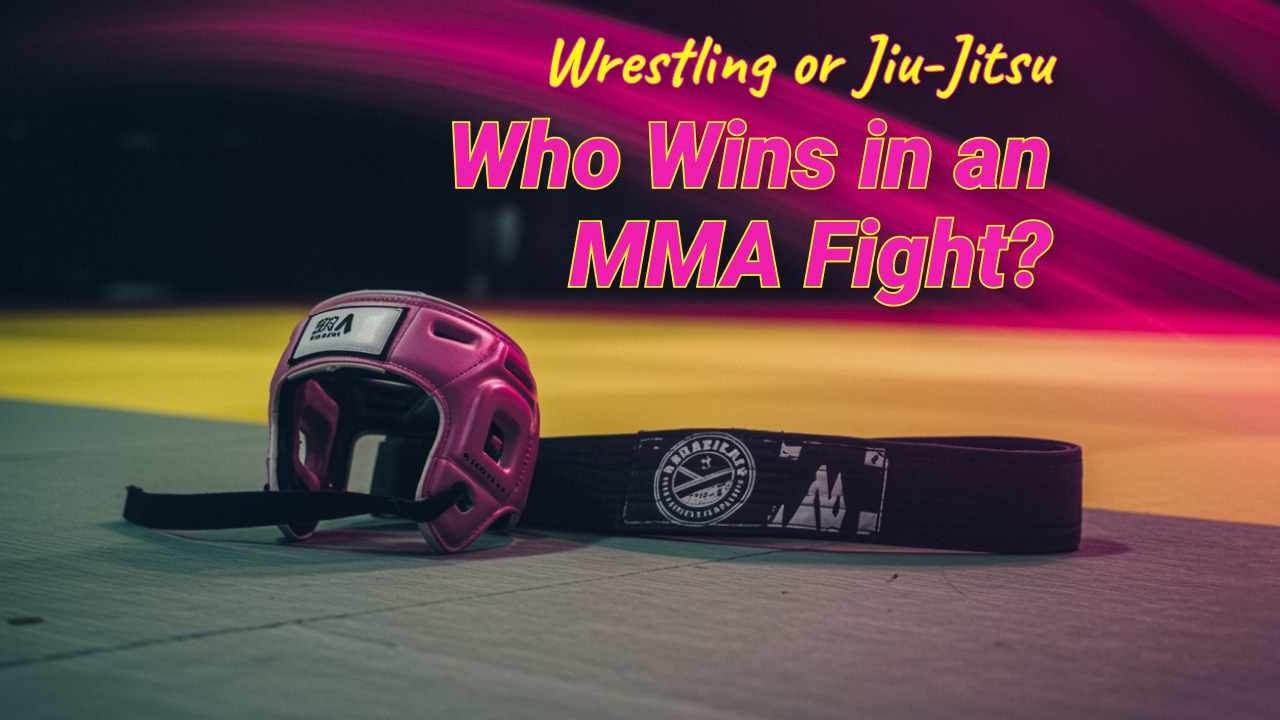Wrestling or Jiu-Jitsu: Who Wins in an MMA Fight?

The question of “who would win in a fight?” has been asked at least a billion times in at least a billion ways. Typically, you take an actual person and pit them against another actual person, but today’s post is a bit more hypothetical.
According to Chael Sonnen of Bad Guy Inc., he regularly gets asked which is going to be more effective in a fight: wrestling or jiu-jitsu?
As much as it seems like a straightforward question, it’s best to include two additional details before attempting to answer. First, these are fighters who have trained solely in their respective disciplines. For the sake of argument, let’s say Fighter A has solely been wrestling and that Fighter B has solely been training jiu-jitsu. This means they are not taking boxing or Muay Thai classes on the side. Second, these fighters have been training at a highly competitive level for the last ten years each.
Jiu Jitsu Wins
For Chael, Fighter B is going to win the vast majority of the time.
Wrestlers have an excellent understanding of pacing and position. They know how to take a fight to ground, how to establish dominance while on the ground, and how to escape from situations when they are in danger of being pinned. However, wrestlers are not trained to pound their way out of dangerous situations while ground fighting or how to successfully execute submissions at the same level as jiu-jitsu fighters.
This is ultimately going to put them at a disadvantage against someone who is skilled in jiu-jitsu. They are also trained to take fights to the ground but then know how to execute submissions once they are there. This is not going to end well for the wrestler.
According to Chael, his rationale was largely influenced by his teacher, Mark Schultz. Schultz was a very established wrestler who was an Olympic champion and won the sole UFC fight in which he participated. This did not prepare him when he went up against Rickson Gracie in a non-official match.
It did not go well for Schultz.
After the experience, he later told Chael, “The only thing that beats wrestling is jiu-jitsu.”
Letting History Be a Guide
To provide a historical dimension, Chael refers back to UFC 4. The finals pitted wrestler Dan Severn against jiu-jitsu fighter Royce Gracie.
Royce Gracie helped popularize jiu-jitsu in North America because of how well he performed in the early UFC tournaments. In addition to being a legend within the North American MMA community on account of his three UFC championships and having the most tournament wins in UFC history (eleven), he also won multiple vale tudo (“no holds barred”) titles in Brazil.
Dan Severen was the first championship wrestler to do well in the world of MMA. He showed people that wrestling can be an effective style in a real-world fight. Prior to his appearance in UFC 4, you only really saw wrestling in strictly regulated tournaments or maybe at the Olympics. In fact, the NCAA and the International Olympic Committee still refuse to consider wrestling to be a martial art.
Severn showed how important position is in an MMA fight. However, it is not more important than knowing submissions. This is the lesson that Royce Gracie taught the world when he defeated Severen even though Severen had almost a 100 lbs. advantage over him.
True, UFC 4 occurred before the unified rules, when there were no breaks in the action and rounds could go up to 30 minutes. This made it more like a vale tudo match. Since the unified rules were adopted in the early 2000s, rounds only last five minutes, and fighters are given a minute of rest between rounds. Chael suggests that this slightly limits the advantage held by jiu-jitsu fighters, but it doesn’t change the fact that jiu-jitsu fighters have more training when it comes to putting their opponents into submission holds and finishing the fight.
Mixing It Up
Of course, no current MMA fighters are pure any longer. Fighters who specialize in striking also know how to grapple and diehard grapplers know how to strike. Everyone mixes their styles.
This mixing of styles has also shown some holes in the efficacy of jiu-jitsu over the years. Within just a few years of Royce Gracie’s triumph at UFC 4, Frank Shamrock showed that staying in guard against a jiu-jitsu fighter was not an issue if you could be free to pound your opponent. “Don’t pass guard. Stay in there and pound,” Shamrock evidently said.
For jiu-jitsu fighters who want to transition into the world of MMA or be better prepared for an actual street fight, this is a reminder that striking is a necessary part of any practical self-defense system (and was a prominent part of jiu-jitsu prior to the 1960s). Not only do you need to learn how to strike, but you also need to learn how to defend against strikes.

